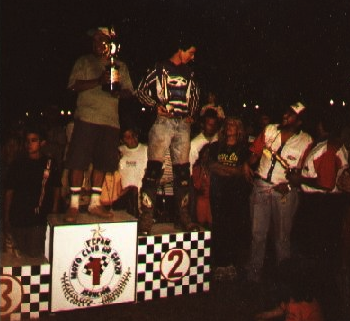 I've been into motorcycles since I was 15 years old in 1973. I first got a Penton 125, then a Honda XL250, Husky CR125, MZ 250, Yamaha RD350, Honda XL250R, Kawasaki KDX200 (I experimented with porting), Honda CR250 (I completely refurbished), Suzuki AX100 (I completely modified), and a two stroke 48cc motorized bicycle.  I motocrossed the Husqvarna in Austin Texas and the KDX in Paraguay. I learned how to ride and do maintenance with my motorcycles but it was the motorized bicycle that forced me to thoroughly learn 2 stroke technology because it was so under-powered. Those engines are designed to be low power in order to pass all import regulations of all countries. I bought it when I lived at an elevation of 8000 ft which lessened power even more. So I read all I could and then experimented with porting, compression, squish bands, expansion chambers, carbs, crank balance, and I designed a better CDI for it based on the KDX CDI design. (I don't have family and I'm almost completely anti-social so I have plenty of time for hobbies). That's when I started the creation of my pipe design spreadsheet. After 6 years I moved to Paraguay and bought an AX100 4 speed which taught me the importance of matching pipe powerband to the RPM spread between shifts, and motivated me to make the jetting calculator because with my basic jetting knowledge I couldn't jet the Mikuni VM20 (except idle and WOT) good. When all the dust had settled it was jetted just right thru the whole throttle range. I also designed and installed a YEIS boost bottle on it. In addition to these programs I also started creating ones for porting, crank balance (used to balance the AX100), squish band (used to make one for the AX100), gas/oil ratio, and carb size. Even though I am the creator of these programs it turned out that they are also teaching tools and I learned a lot by using them. I tell a lot of what I know on my website and Youtube videos but still I believe all engine modifiers need this software. I've been criticized though, being told that I know very little because I haven't worked on race teams (I was once invited io join a karting team in Australia) and 48cc motorized bicycles don't count. I'm sure that knowledge of racing motorcycles can be fine tuned with race team experience but that doesn't negate what I know and the engineering principles upon which my software is based. And they aren't purely theoretical because myself and hundreds of others have used them in real life situations. And a 48cc two stroke made for bicycles is not a lower class citizen in the world of motorcycles. It works on the same principles of physics that all other 2 strokes go by. Most modern dirt bikes have very good designs already and usually don't need anything but better jetting (ie: needle selection), oil ratio selection, and perfecting the squish band. Most of my clients get my software to know how to modify their older dirt bikes or their street bikes for more power, better full range throttle response, and less vibration. |